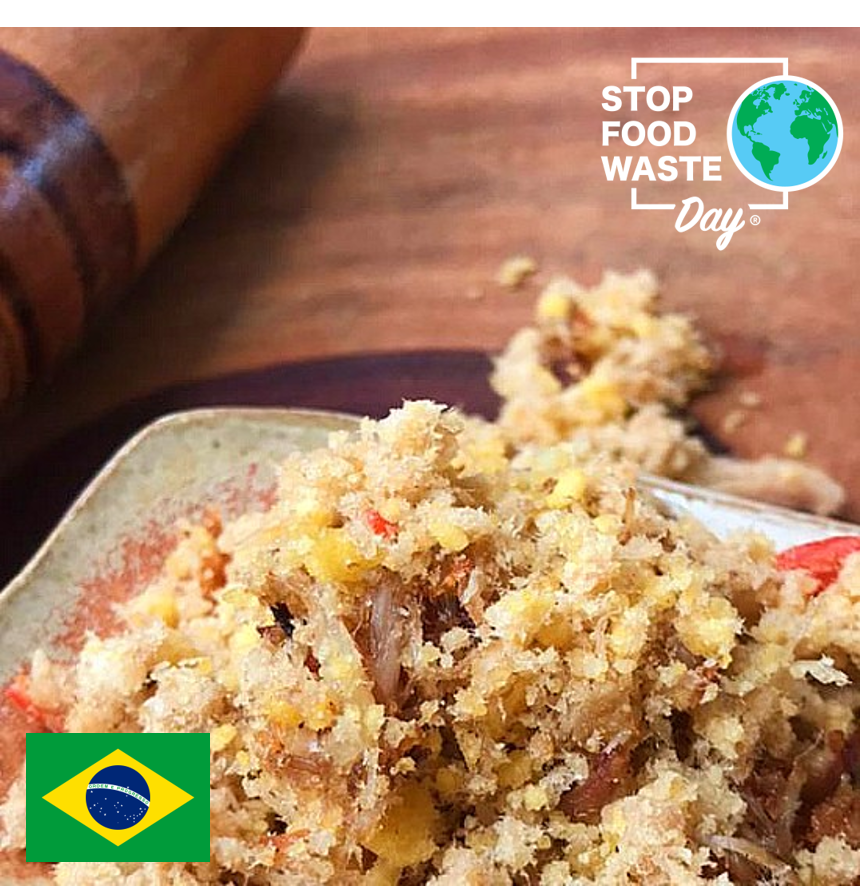Dried Beef Paçoca

Cleber Oliveira, Chef, Compass Group Brazil:
"Paçoca” comes from the Indigenous Guarani language, PO - ÇOC: to grind, to pound. Cassava was already a staple food as part of our native Indian heritage. Beef paçoca was much used and valued by the tropeiros, or cattlemen, pioneers and cowboys and spread throughout nearly all of Brazil. There are variations of paçoca in the North, Northeast, Central West and Southeast. In the Southeast, for example, it was one of the best ways for pioneers to handle food in order to make use of local products (cassava, corn, meat ...) and preserve them in the most dehydrated and long-lasting fashion possible in order to hold up during long their long journeys to explore and discover São Paulo and Brazil. Even today, in many homes in the countryside of São Paulo, the large wooden mortars and pestles (also used for coffee) are used to process this food, and in the backlands of the northeast it is no different.
Today’s beef paçoca makes the best use of ingredients, preserving them naturally, and provides cost savings even in its preparation and in the need for few ingredients, making it an extremely cheap, nutritious and affordable dish for everyone.
Beef paçoca has its total versatility and usefulness in the possibility of using a variety of animal proteins: dried or sun-dried meat, fresh meat, usually a secondary cut (cheaper), pork shoulder, loin, sirloin or pork chops and barbecued meat (making use of leftovers and turning them into an even tastier dish).
The fat used can be butter, soybean oil, sunflower or canola oil, and more traditionally the fat from bacon or lard. The flour can also be chosen according to local tastes and can be cassava flour or flaked cornmeal.
- 6
- Easy
INGREDIENTS
500 g Dried beef, sun-dried beef, beef chuck
150 g butter, bacon without pork rind or lard
1 white or red onion (minced)
1 crushed garlic clove
1 hot pepper: malagueta, or datil or goat pepper
300 g roasted cassava flour or flaked cornmeal
METHOD
- If dried meat is used, de-salt it the day before and cook until tender.
- If fresh meat is used, season and cook it.
- Heat the fat in a saucepan, add onions and pieces of meat and fry well.
- Use a mortar and pestle or a food processor to grind the fried / braised or roasted meat.
- Add the raw pepper and continue processing.
- Gradually add the cassava flour or cornmeal to control the moisture in the preparation.
- If necessary, add a little more of the fat from frying the meat.
- Mix all ingredients well.
- For dried or sun-dried beef, it is unnecessary to add salt. For fresh meat, add salt to taste.





